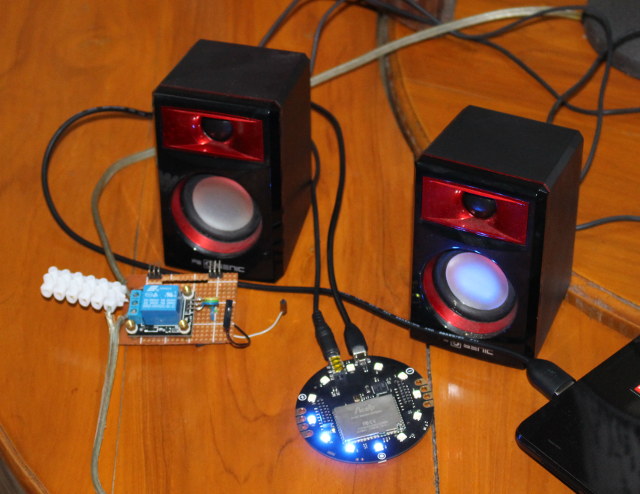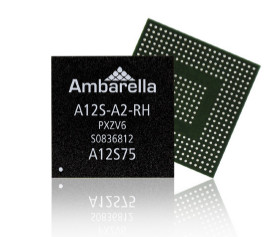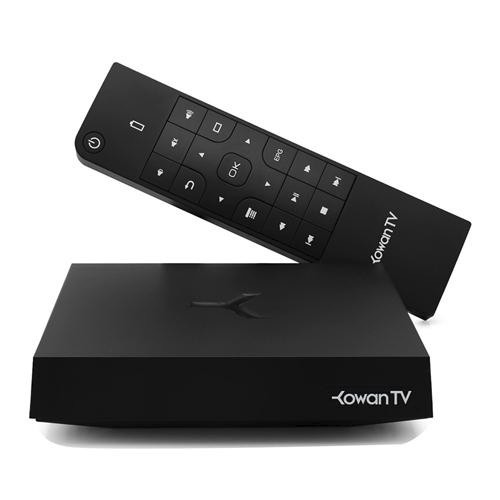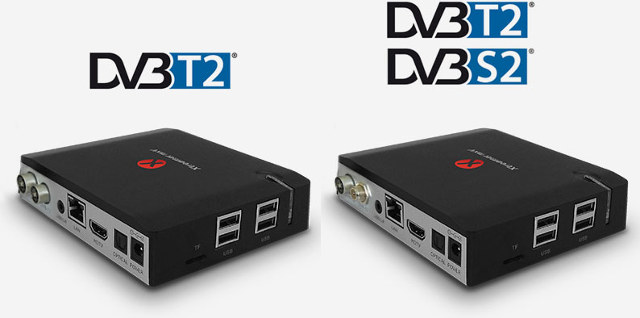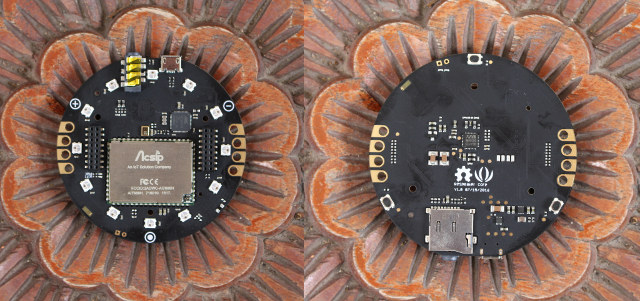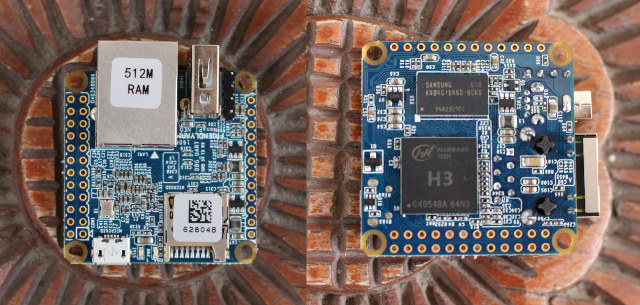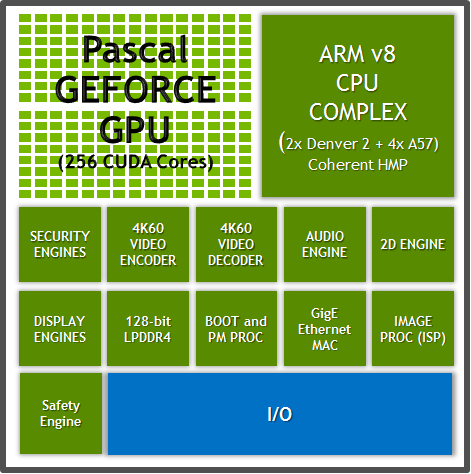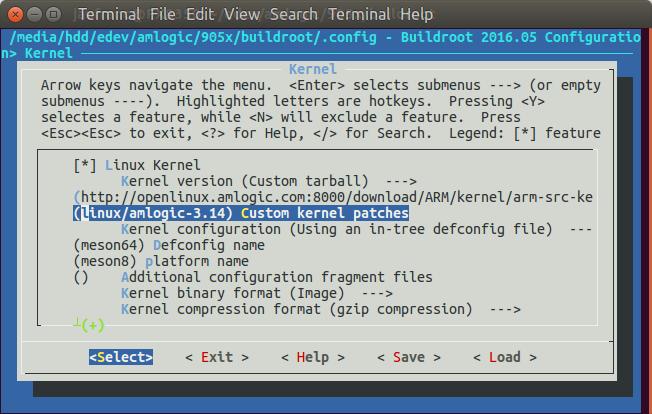ReSpeaker is a development board combining an Atmel AVR MCU, a MediaTek MT7688 WiFi module running OpenWrt, a built-in microphone, an audio jack, and I/O headers to allow for voice control and output for IoT applications. That means you could make your own Amazon Echo like device with the board and add-ons, use it as a voice controlled home automation gateway and more. The board was launched on Kickstarter a few days ago, and already raised $100,000 from about 100 backers, but I’ve received an early sample, so I’ll provide some more information about the firmware, and shows how to use with some Python scripts leveraging Microsoft Bing Speech API. You’ll need a micro USB to USB cable to connect your to computer (Linux, Windows, Mac OS…), and a speaker to connect to the board. Linux (OpenWrt) boots in a few seconds, and once it’s done all RGB LED will […]
Ambarella A12S SoC Allows For Cheaper 4K 30 fps Action Cameras, or Does it Not?
[Update: I’ve been informed that Ambarella A12S product brief from their website contains outdated information, and that A12S does indeed support 4K @ 30 fps, not only 2K @ 30 fps] [Update 2 (03/09/2016): The company has now updated the page, and I’ve myself updated the article accordingly] Some ultra cheap Allwinner V3 based cameras are advertised as 4K cameras, but in reality they are limited to 4K @ 15 fps, and on top of that the software have to extrapolate data to get to that resolution. So there are not usable for most people, unless maybe if you somehow need a 4K CCTV camera. Currently one of the cheapest “true” 4K action cameras is Yi Technology / Xiaomi Yi 2 sports camera based on Ambarella A9S SoC, capable of recording up to 4K @ 30 fps, and selling for around $250. But there’s now a new wave of cheaper […]
KowanTV Click Linux IPTV Box Review
CNXSoft: Ray reviews Amlogic S812 powered Linux based KowanTV Click TV box with allegedly access to over a thousand free IPTV channels. While the hardware is pretty standard, you pay a (hefty) premium to access their IPTV servers, and it reminds me of Jynxbox Live which I reviewed a few years ago. I received one these rare Linux stream boxes. It’s called TVone Entertainment hub, advertised as: KowanTV Click To Play Entertainment Hub European American TV Channels Live Broadcast Video on demand IPTV BOX 1000+ Free Channels, and provided by GeekBuying for this review. KowanTV Click Specifications System Operating System Embedded Media OS( linux ) CPU Amlogic S812( ARM cortex-A9 ) GPU Mali-450 Octo-core RAM 2GB RAM ROM 8GB Flash Memory Communication Wifi Connectivity IEEE 802.11 b/g/n 2.4GHz/5GHz Ethernet 10/100M Bluetooth Yes Media Video Supported Video (up to 4K) – MPEG1/2/4, H.264, H.265,AVC, VC-1 , RM/RMVB , Xvid , DviX3/4/5/6, […]
Xtreamer mxV Plus DVB-T2 and mvX Pro DVB-T2/DVB-S2 Combo TV Boxes Support Android and OpenELEC
Xtreamer mxV is a family of TV boxes powered by Amlogic S905 processor, and supporting Android 5.1 and OpenELEC firmware provided by the company [Update: It looks like they simply used Vitmos/amlinux.ru image]. There are three models: mxV without tuner, mxV Plus with a DVB-T2 tuner, and mvX Pro with a DVB-T2/DVB-S2 combo tuners. The three devices share the same specifications: SoC – Amlogic S905 quad core ARM Cortex-A53 @ up to 2.0GHz with penta-core Mali-450MP GPU @ 750 MHz System Memory – 1GB DDR3 Storage – 8GB eMMC flash + micro SD card slot Video Output – HDMI 2.0 up to 4K @ 60Hz with HDCP 2.2 support, and 3.5mm AV jack Audio – HDMI, AV (stereo), optical S/PDIF Video Codecs – 10-bit H.265 up to 4K60, MPEG/VC-1/AVS+/H.265 up to 4K30 Tuner mxV – None mxV Plus – DVB-T2 tuner with two connectors mxV Pro – Combo DVB-T/T2 and […]
ReSpeaker WiFi IoT Board is Designed for Voice Interaction (Crowdfunding)
More and more devices are supporting voice interaction nowadays from your smartphone to devices like Amazon Echo, but so far, I had not seen development boards specifically designed for that purpose, and that’s exactly what Seeed Studio ReSpeaker board does by combining audio capabilities, WiFi connectivity, and I/O headers. ReSpeaker Core board specifications: WiFi Module – Acsip AI7688 Wi-Fi 802.11 b/g/n module based on Mediatek MT7688 MIPS SoC Storage – micro SD card slot USB – 1x micro USB port for programming and power Audio – 3.5mm AUX port, WM8960 audio codec, 2-pin header for external speakers Expansion – 2x 8-pin expansion headers for I2C, GPIO and USB 2.0 host connected to MT7688, built-in microphone. MCU – Atmel ATMega32U4 @ 16 MHz Misc – 12x RGB LEDs, 8x touch sensors, 3 push buttons Power Supply – 5V DC Dimensions – 70mm diameter Weight – 70 grams The board runs OpenWrt, […]
NanoPi NEO Board Gets Armbian Debian 8 & Ubuntu 16.04 with Linux 4.6 & 4.7 (Mainline), h3consumption Power Consumption Tool
We’ve been blessed with a wide range of low cost Allwinner H3 boards thanks to Shenzhen Xunlong Orange Pi and FriendylARM NanoPi boards. Recently, armbian developers have been focusing on NanoPi NEO board, and they’ve now released Debian Jessie and Ubuntu Xenial with Linux 4.6.7 and Linux 4.7.2. The latter is mainline kernel with some patchsets for Ethernet. You can download the Linux 4.6.7 based “beta” images from armbian NanoPi NEO page, and selected the “Vanilla” versions, then flash then one a micro SD card as you would normally do. Linux 4.7.2 based “experimental” images with USB OTG support and schedutil cpufreq governor can be found on the separate server in a temporary directory. Thomas Kaiser explains further: Ethernet and throttling are working (the latter not as efficient as with legacy kernel but at least it protects the SoC from overheating). Please note that all vanilla kernel images currently suffer from […]
Nvidia Provides More Details About Parker Automotive SoC with ARMv8 Cores, Pascal GPU
Nvidia demonstrated DRIVE PX2 platform for self-driving cars at CES 2016, but did not give many details about the SoC used in the board. Today, the company has finally provided more information about Parker hexa-core SoC combining two Denver 2 cores, and four Cortex A57 cores combining with a 256-core Pascal GPU. Nvidia Parker SoC specifications: CPU – 2x Denver 2 ARMv8 cores, and 4x ARM Cortex A57 cores with 2MB + 2 MB L2 cache, coherent HMP architecture (meaning all 6 cores can work at the same time) GPUs – Nvidia Pascal Geforce GPU with 256 CUDA cores supporting DirectX 12, OpenGL 4.5, Nvidia CUDA 8.0, OpenGL ES 3.1, AEP, and Vulkan + 2D graphics engine Memory – 128-bit LPDDR4 with ECC Display – Triple display pipeline, each at up to 4K 60fps. VPU – 4K60 H.265 and VP9 hardware video decoder and encoder Others: Gigabit Ethernet MAC Dual-CAN […]
Amlogic Releases Linux 3.14 Source Code for S905X, S905D, and S912 Processors, Has Started Working on Linux 4.4 / Android 7.0
Amlogic has just released buildroot with Linux 3.14 with support for Amlogic S905X (p212 board), S905D (p230 board), and S912 (Q200 board) processors, and the company appears to have started working on Linux 4.4 likely for future support for Android 7.0. You can check the source code as follows:
|
1 2 3 |
wget -c http://openlinux.amlogic.com:8000/download/ARM/filesystem/arm-buildroot-2016-08-18-5aaca1b35f.tar.gz tar xf arm-buildroot-2016-08-18-5aaca1b35f.tar.gz cd buildroot |
If you have the wrong toolchain the code won’t build (See comments section). So I installed several toolchains provided by Amlogic (all may not be needed) in /opt:
|
1 2 3 4 5 6 7 8 9 10 |
wget -c http://openlinux.amlogic.com:8000/deploy/gcc-linaro-aarch64-linux-gnu-4.9-2014.09_linux.tar wget -c http://openlinux.amlogic.com:8000/deploy/gcc-linaro-aarch64-none-elf-4.8-2013.11_linux.tar wget -c http://openlinux.amlogic.com:8000/deploy/gcc-linaro-arm-linux-gnueabihf.tar.gz wget -c http://openlinux.amlogic.com:8000/deploy/arc-4.8-amlogic-20130904-r2.tar.gz wget -c http://openlinux.amlogic.com:8000/deploy/CodeSourcery.tar.gz sudo tar xvf gcc-linaro-aarch64-linux-gnu-4.9-2014.09_linux.tar -C /opt sudo tar xvf gcc-linaro-aarch64-none-elf-4.8-2013.11_linux.tar.bz2 -C /opt sudo tar xvf arc-4.8-amlogic-20130904-r2.tar.gz -C /opt sudo tar xvf gcc-linaro-arm-linux-gnueabihf.tar.gz -C /opt sudo tar xvf CodeSourcery.tar.gz -C /opt |
I also downloaded a shell script to add the toolchains to my path:
|
1 2 |
wget http://openlinux.amlogic.com:8000/deploy/TOOLSENV.sh source TOOLSENV.sh |
Once toolchains are setup, you can select one of three boards config (Q200 / S912 as example) and start building the code:
|
1 2 3 |
sudo apt install build-essential make mesongxm_q200_release_defconfig make |
If you are interested in S905X or S905D instead, use respectively mesongxl_p212_release_defconfig or mesongxl_p230_release_defconfig. I built both S912:
|
1 2 3 4 5 6 7 8 9 10 11 12 13 14 15 |
ls -l output/images/ total 1338448 -rw-r--r-- 1 jaufranc jaufranc 20407939 Aug 30 13:44 boot.img lrwxrwxrwx 1 jaufranc jaufranc 54 Aug 30 13:44 dtb.img -> /home/jaufranc/buildroot/output/images/gxm_q200_2g.dtb -rw-r--r-- 1 jaufranc jaufranc 40521 Aug 30 11:34 gxm_q200_2g.dtb -rw-r--r-- 1 jaufranc jaufranc 16973552 Aug 30 11:34 Image -rw-r--r-- 1 jaufranc jaufranc 7002624 Aug 30 13:44 rootfs.cpio -rw-r--r-- 1 jaufranc jaufranc 3391430 Aug 30 13:44 rootfs.cpio.gz -rw-r--r-- 1 jaufranc jaufranc 3391494 Aug 30 13:44 rootfs.cpio.uboot -rw-r--r-- 1 jaufranc jaufranc 1073741824 Aug 30 13:44 rootfs.ext2 lrwxrwxrwx 1 jaufranc jaufranc 11 Aug 30 13:44 rootfs.ext4 -> rootfs.ext2 -rw-r--r-- 1 jaufranc jaufranc 176076800 Aug 30 13:44 rootfs.tar -rw-r--r-- 1 jaufranc jaufranc 67588619 Aug 30 13:45 rootfs.tar.gz -rw-r--r-- 1 jaufranc jaufranc 917504 Aug 30 13:42 u-boot.bin -rw-r--r-- 1 jaufranc jaufranc 918016 Aug 30 13:42 u-boot.bin.sd.bin |
and S905X images successfully:
|
1 2 3 4 5 6 7 8 9 10 11 12 13 14 15 |
ls -l output/images/ total 593932 -rw-r--r-- 1 jaufranc jaufranc 20408642 Aug 30 13:41 boot.img lrwxrwxrwx 1 jaufranc jaufranc 72 Aug 30 13:41 dtb.img -> /home/jaufranc/edev/amlogic/905x/buildroot/output/images/gxl_p212_2g.dtb -rw-r--r-- 1 jaufranc jaufranc 37278 Aug 30 12:08 gxl_p212_2g.dtb -rw-r--r-- 1 jaufranc jaufranc 16973552 Aug 30 12:08 Image -rw-r--r-- 1 jaufranc jaufranc 7002624 Aug 30 13:40 rootfs.cpio -rw-r--r-- 1 jaufranc jaufranc 3391580 Aug 30 13:41 rootfs.cpio.gz -rw-r--r-- 1 jaufranc jaufranc 3391644 Aug 30 13:41 rootfs.cpio.uboot -rw-r--r-- 1 jaufranc jaufranc 1073741824 Aug 30 13:41 rootfs.ext2 lrwxrwxrwx 1 jaufranc jaufranc 11 Aug 30 13:41 rootfs.ext4 -> rootfs.ext2 -rw-r--r-- 1 jaufranc jaufranc 230502400 Aug 30 13:41 rootfs.tar -rw-r--r-- 1 jaufranc jaufranc 90573453 Aug 30 13:41 rootfs.tar.gz -rw-r--r-- 1 jaufranc jaufranc 917504 Aug 30 13:39 u-boot.bin -rw-r--r-- 1 jaufranc jaufranc 918016 Aug 30 13:39 u-boot.bin.sd.bin |
Separately, you can also find buildroot for Linux 4.4, but […]


